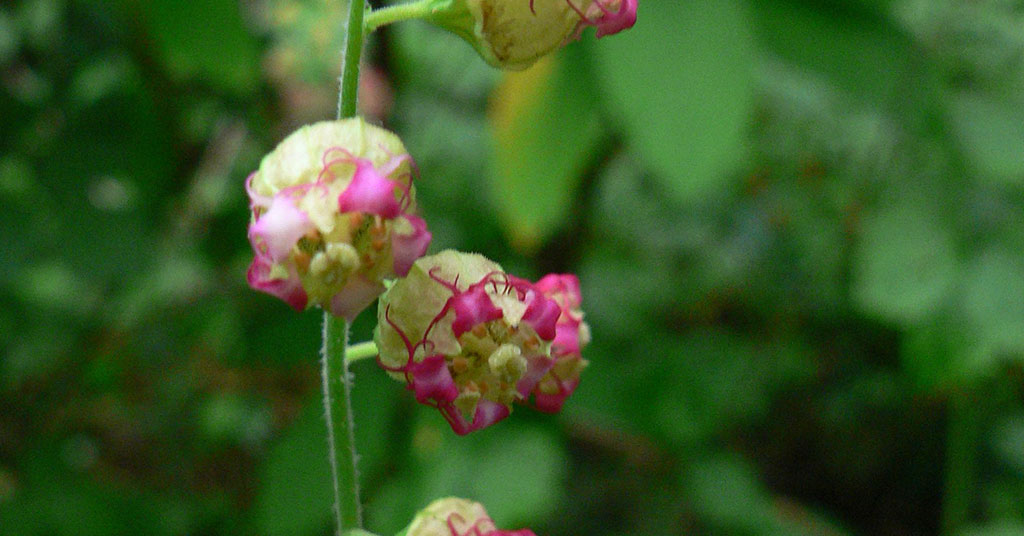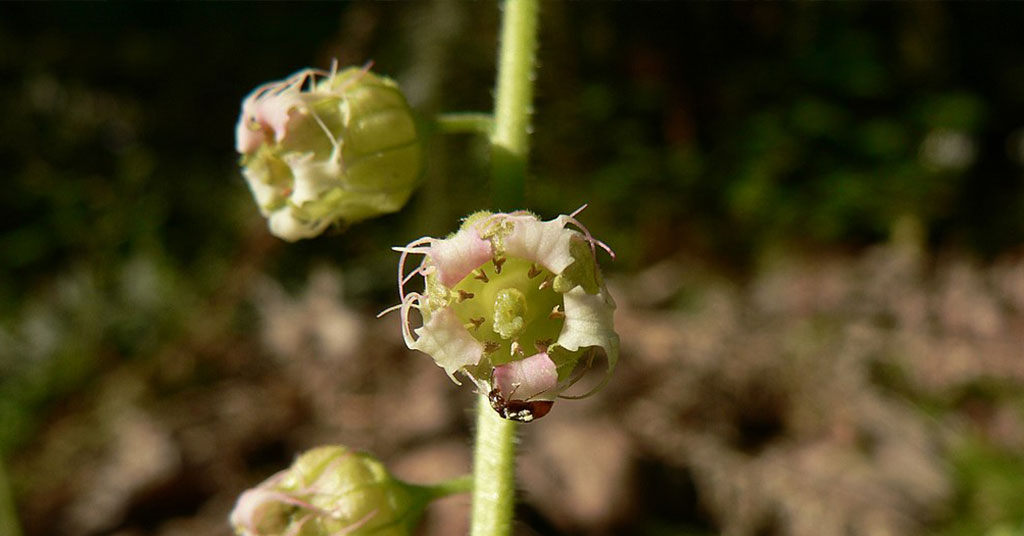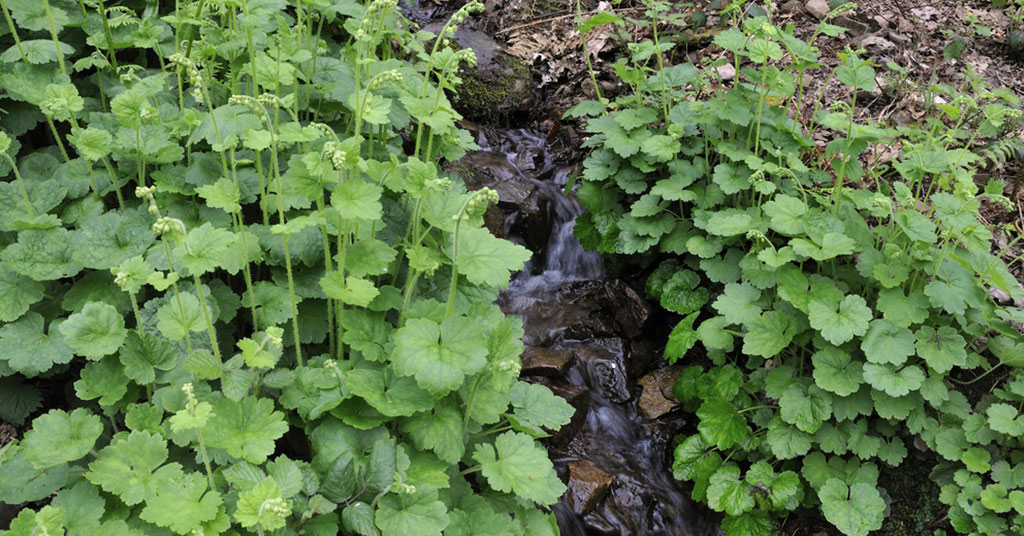Tellima grandiflora is an excellent plant to add to any native flower garden in the Pacific Northwest, Alaska, and Montana. It forms a lush, spreading groundcover that is perfect for shady, damp gardens. In this article, we’ll explore the fringe cup flower, how to grow it, and everything else you need to know.
What is Tellima grandiflora?

Tellima grandiflora, sometimes called fringe cup, is a perennial native to the damp forest environs that stretch from Alaska southward into British Columbia, Washington, Oregon, and westward into Idaho and Montana. It produces dense clumps of rounded, slightly toothed, hairy leaves approximately 4 inches wide.
- Scientific name: Tellima grandiflora
- Other names: Fringe cup, false alum root
- Native to: Alaska south to Idaho and Montana
- Invasiveness: Unknown
- Tenderness: Perennial
- Sun: Shade
- Water: Moist
- Soil: Well draining
- Hardiness zone: 4-7
- When to plant: Spring
- Spacing: 2 feet
- Plant height: 16-32 inches
- Flower color: Green, red, sometimes white, maturing to pink
- Bloom period: Summer
- Container friendly: Yes
- Fertilizer: Organic fertilizer in the spring
- Toxicity: None reported
- Drought tolerant: No
- Deer resistant: Yes
- Pest resistant: Yes
How to grow Tellima grandiflora
Tellima grandiflora, also known as false alum root and fringe cup, is a groundcover flower native to the Pacific Northwest, Idaho, and Montana. It is a perennial in zones 4-7 and prefers moist, well-draining soil and shady planting spots. The best time to plant this flower in your garden is springtime. Space them 2 feet apart and expect flowers to reach 2 feet or taller.
Tellima grandiflora produces lovely greenish red, sometimes white flowers that eventually mature into pink. They begin blooming in mid-spring and continue through summer. These are container-friendly plants that appreciate the application of organic fertilizer in the spring.
Fringe cup has not been reported to be toxic to humans or animals. It is considered deer and pest-resistant, but it is not drought-tolerant.
Invasiveness
Tellima grandiflora is a hardy, tough groundcover that, in its native range, can outcompete other invasive plants, making it an ideal groundcover. It is unknown if fringe cup is invasive when planted outside of its native range, but given its propensity to grow and spread, we do not recommend planting it in the ground outside of its native range.
Growing Tellima grandiflora in containers
Not much has been written by botanists or gardeners about growing Tellima grandiflora in pots or containers. It has a similar growth profile to the Piggyback Plant, another groundcover native to the region that is commonly grown as a potted houseplant. If you live outside of fringe cup’s native range, we recommend only attempting to grow it in containers to prevent potentially invasive spread.
How to collect Fringe Cup seeds

Fringe cup sends up lovely flowers in mid-spring that continue to bloom well into summer. By mid-summer, the flowers begin to die back, revealing small capsules that measure about a half inch in length. Once these capsules have reached their mature size, remove them from the plant and store in a cool, dry place. Once dried, the capsules can be split open, revealing small, brown, wrinkled seeds.
How to propagate Tellima grandiflora
The two easiest ways to propagate Tellima grandiflora is by collecting and replanting seeds using the above-described method or by digging it up and splitting up the rhizomes that it grows from under the soil. In either case, give your fringe cups plenty of space to grow. They have a tendency to spread up to two feet wide, so planting 24 inches apart is recommended.
Wildlife attracted by Tellima grandiflora
The pink flowers of this native perennial are known to attract hummingbirds to your garden during its bloom period of mid-spring to mid-summer. It’s a good early source of food for hummingbirds and other pollinators.













